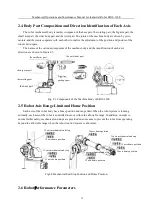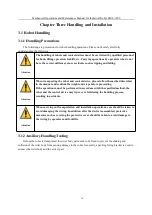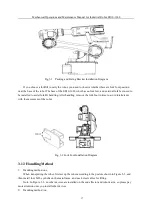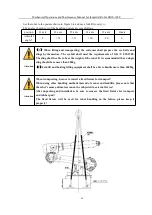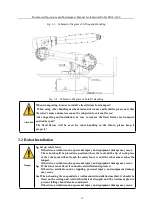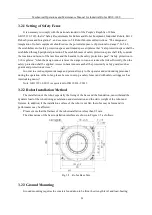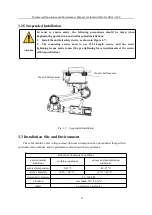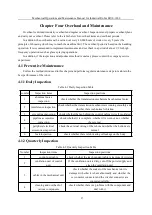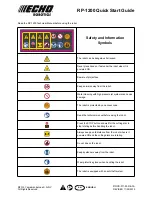
Mechanical Operations and Maintenance Manual for Industrial Robot ER10-1600
20
3.2.1 Setting of Safety Fence
It is necessary to comply with the national standard of the People’s Republic of China
GB11291.2-2013-that is" Safety Requirements for Robots and Robot Equipment; Industrial Robots, Part 2:
Robot System and Integration" , and see more in 5.4 Robot Movement Restrictions: "The design and
integration of robotic equipment should reduce the potential exposure of personnel to danger". In 5.4.2,
the establishment of safety protection space and limited space stipulates that
“
safe protection space shall be
established through peripheral protection. The establishment of safety protection space shall fully consider
the location and layout of the machine and the hazards in the safety protection space”. Safety protection in
5.10 regulates: "when the design cannot remove the danger or can not reduce the risk sufficiently, then the
safety protection shall be applied. Access to hazardous areas shall be protected by safety guards such as
guards and protection devices. "
In order to avoid equipment damage and personal injury to the operator and surrounding personnel
during the operation of the robot, please be sure to set up a safety fence (and with safety settings such as
interlocking doors)!
Note: GB 11291.2-2013 is equivalent to ISO 10218-2:2011;
3.2.2 Robot Installation Method
The installation of the robot, especially the fixing of the base and the foundation, can withstand the
dynamic load of the robot during acceleration and deceleration and the static weight of the robot and
fixtures. In addition, if the installation surface of the robot is not flat, the robot may deform and its
performance may be affected.
Please ensure that the flatness of the robot installation is less than 0.5mm.
The dimensions of the base installation interface are shown in Figure 3-5 as follows:
Fig.3-5 Robot Base Size
3.2.3 Ground Mounting
Ground mounting requires the concrete foundation to be firm, the strength level and load-bearing







